Strange Boids Pavillion
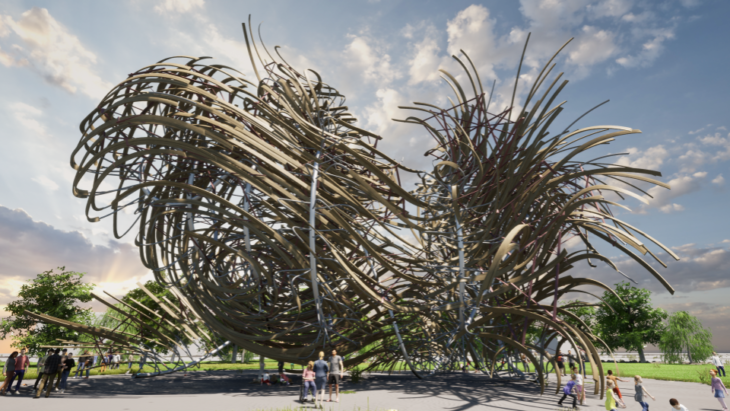
In order to understand the connection between natural systems and computation for design intentions. The following project seeks to explore how two natural phenomenon’s like Lorenz Strange Attractors (used to predict the weather) and Flocking Birds, can be abstracted to interact and merge to develop parametric computational geometries.
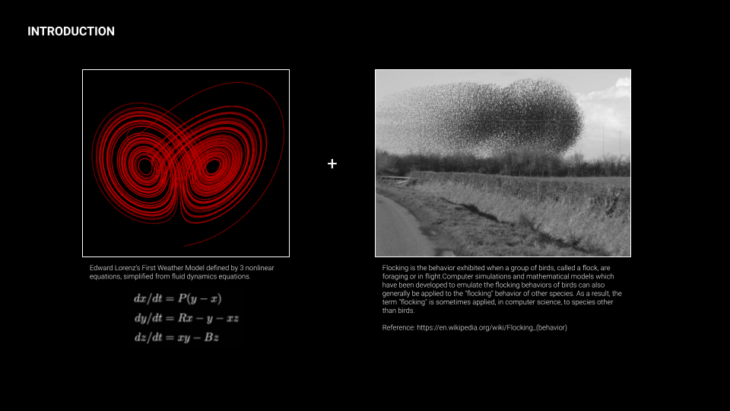
Lorenz Strange Attractor:
Strange Attractors are part of the Chaos Theory under Mathematics and they fall under Dynamical Systems, where a Strange Attractor is basically an Attractor with a fractal structure. Edward Lorenz abstracted the behavior of storms to predict the weather and created a set of three differential equations, providing points x, y, and z, which when iterated and looped over time result in the form shown in the image.
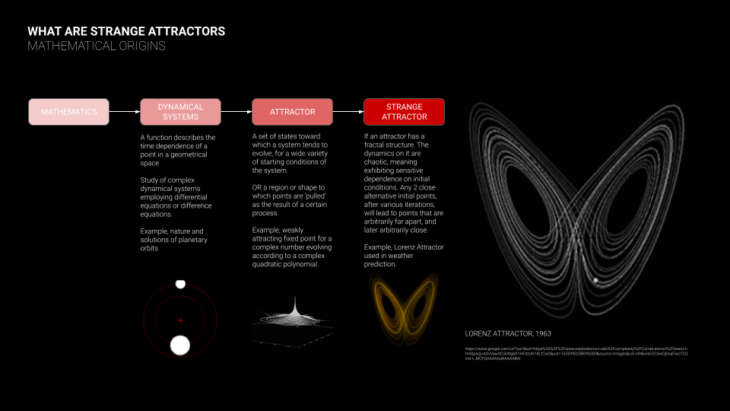
Flocking Birds:
Flocking is the behavior exhibited when a group of birds, called a flock, are foraging or in flight. Computer simulations and mathematical models which have been developed to emulate the flocking behaviors of birds can also generally be applied to the “flocking” behavior of other species. As a result, the term “flocking” is sometimes applied, in computer science, to species other than birds.
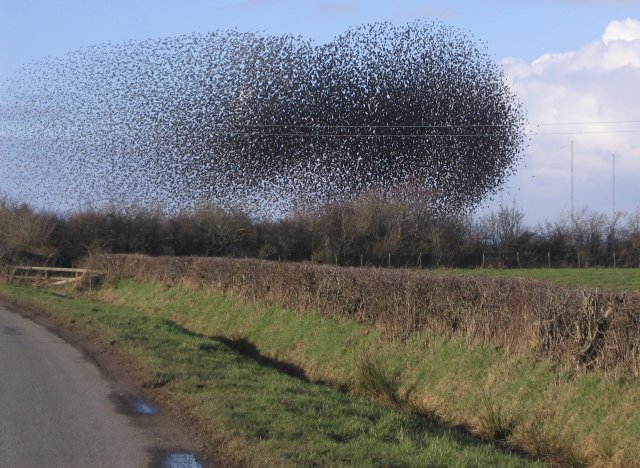
The Site is located at Playa De Madrid at the outskirts of Madrid, which is a contaminated site that we chose to intervene with our project.
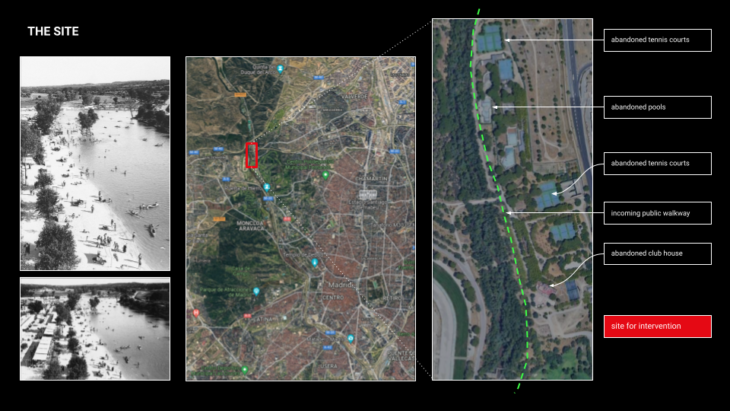
Parametric Generation:
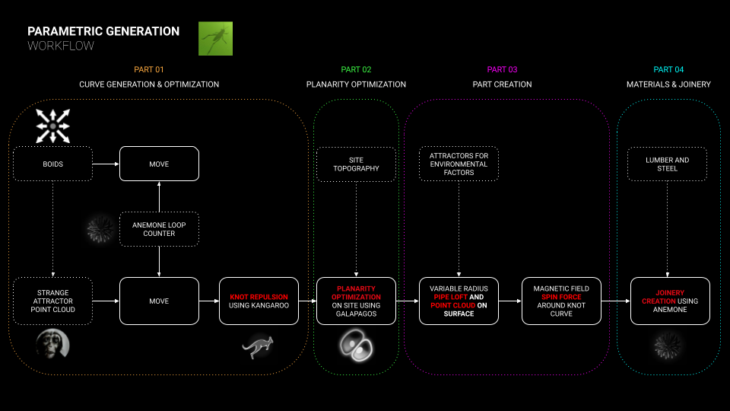
During this process we explore and use a variety of tools to generate our final output.
- Curve Generation and optimization – Chimpanzee Boids, Anemone and Kangaroo
As a starting point we introduce an initial Lorenz Attractor curve from Chimpanzee plug-in. The exploded curve gives us a reference for displacement and pulls these points during the interaction between the curve and boids and by this phenomenon, develop a more dynamic curve. An analogy can be drawn with birds going through a storm cloud.
For boids simulation we steer direction in x, y plane for the first attempt and x, y and z for the second attempt.
To get more iterations and get more options for our base curve we used knot repulsion with Kangaroo and data recorder to capture all iterations. Out of all the iterations we choose the one that is more similar in form to our main curve from lorenz attractor and boids simulation.
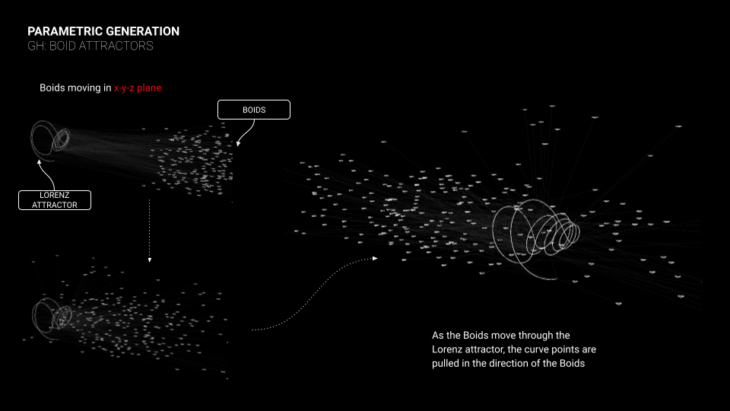
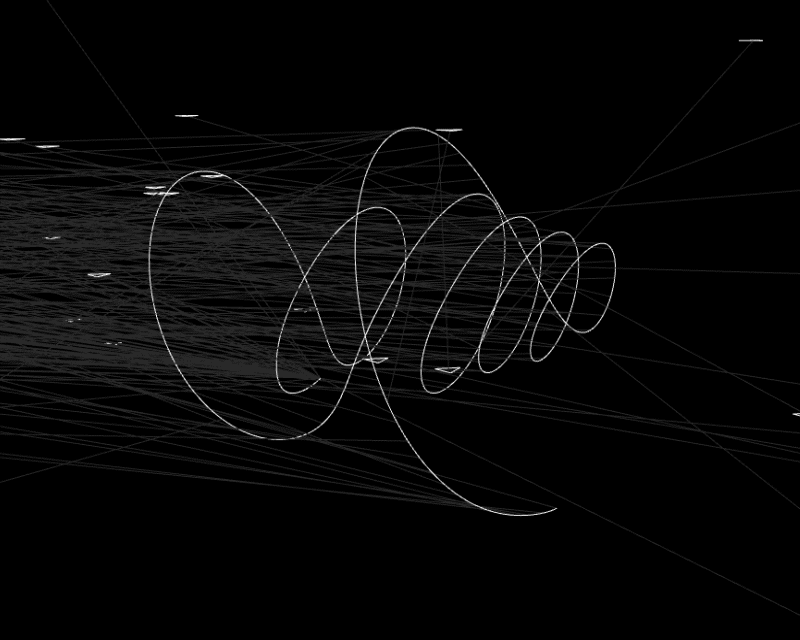
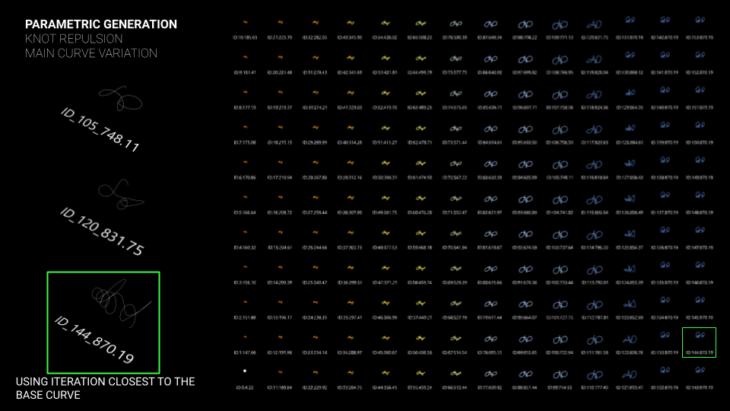
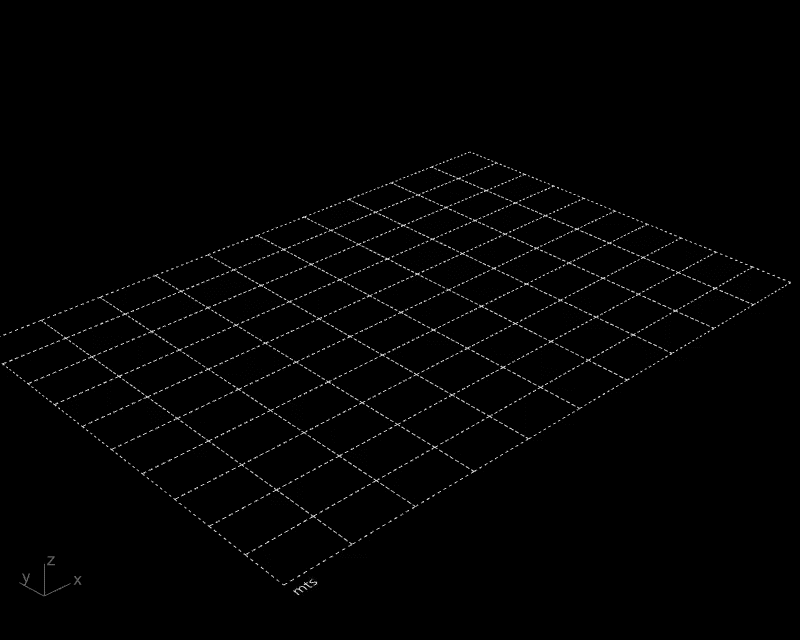
2. Planarity Optimization – Galapagos
We tried to look for a more affordable place from our site by running as many number simulations as possible in Galapagos to choose our place on site.
The iteration that we selected was the maximum score based on slope fitness values. Finally, the location in our site is driven to avoid the vegetation, buildings, water and planarity to place the pavilion.
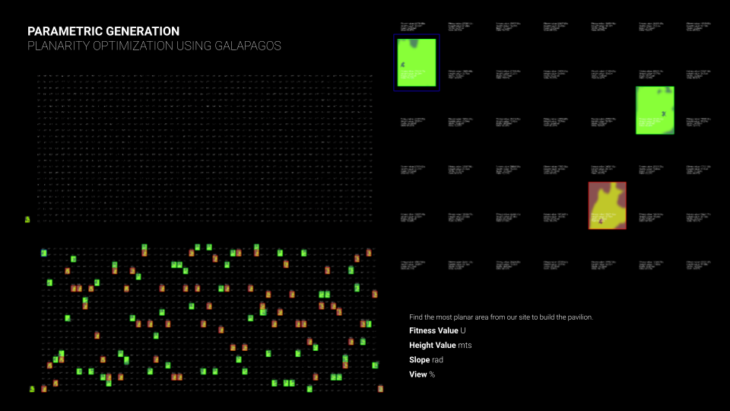
3. Part Creation – Native GH
We used Sunlight hours data to vary the radius on the piped curve for maximum shading in maximum sunlight parts.
Then we look at the magnetic field spin force around the curve. Using the piped curve, we generated a point cloud on the surface, using the base curve frames for the spin force. Then the curves grow around the frames upto a maximum of 157 iterations to generate magnetic fields curves around the pipe.
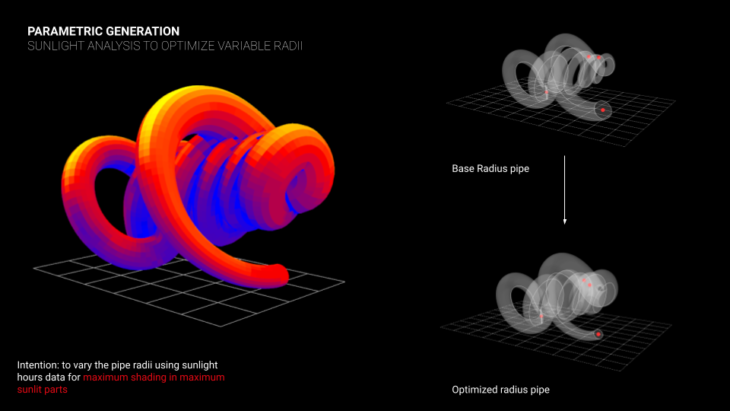
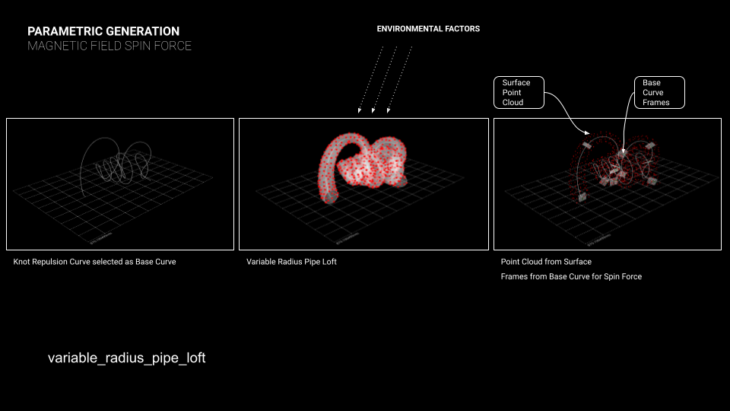
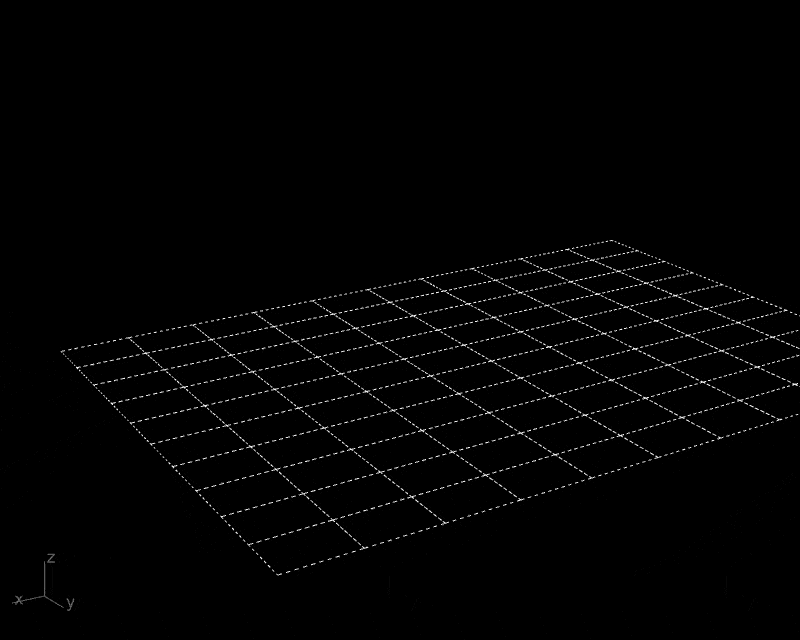
4. Materials and Joinery – Anemone
We took the curves from the previous step and extruded them based on vector normals to generate rules surfaces. We then iterated through the curves to cluster them based on closest length and created 7 clusters of the same length of surfaces for ease of fabrication.
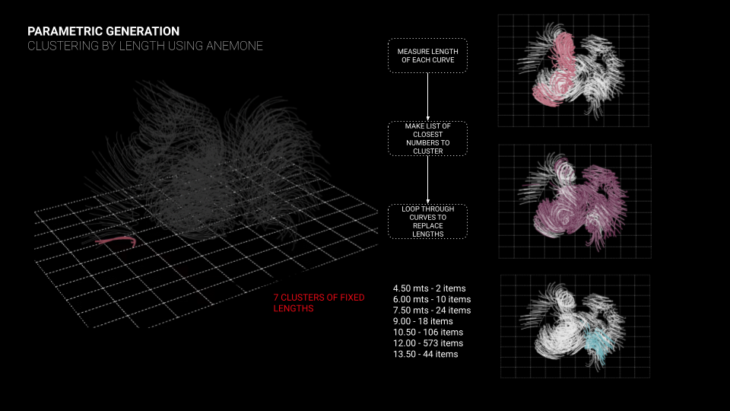

Then we created the tectonic details by looping through the curves using anemone and creating steel bracket joinery to connect the mid-points of the surfaces. This looping includes for the curves to traverse the width of the surfaces in order to create a bracket surface that has space for fasteners.
The materials we selected to work with is lumber for the strips, and steel for the primary, secondary and tertiary structural components.
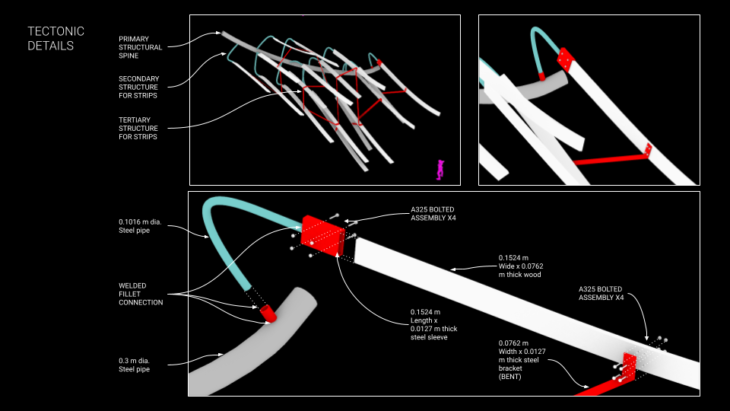
An exploded view shows the different parts of the entire structure. With the spine being the base curve that was generated from Part 01. The secondary structure connects each individual curve to this base curve. And the tertiary structure creates the direct and continuous connections between the individual panels.

We also created an unrolling script for the different parts to be made ready for fabrication data.
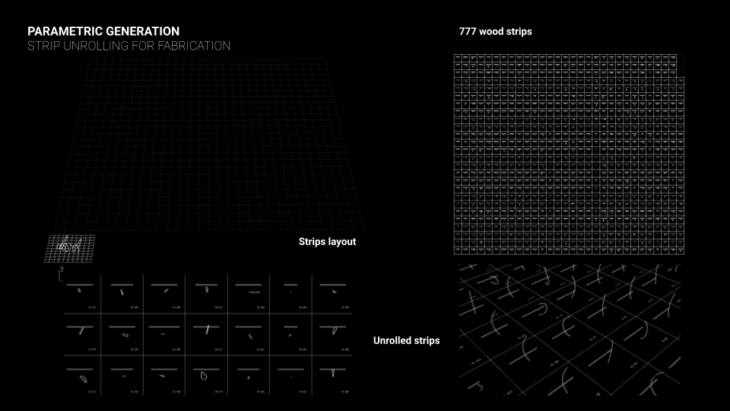
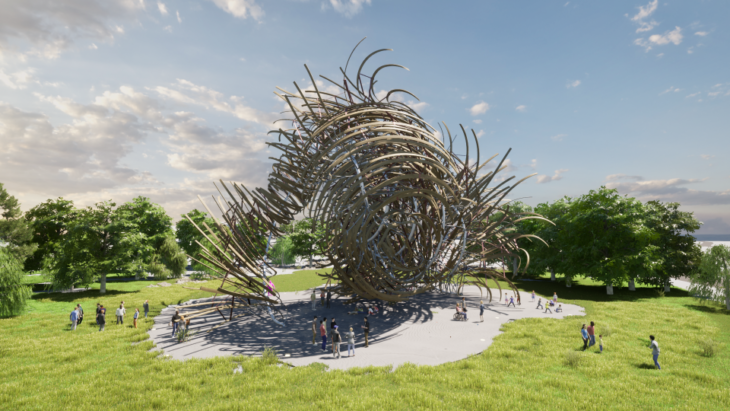
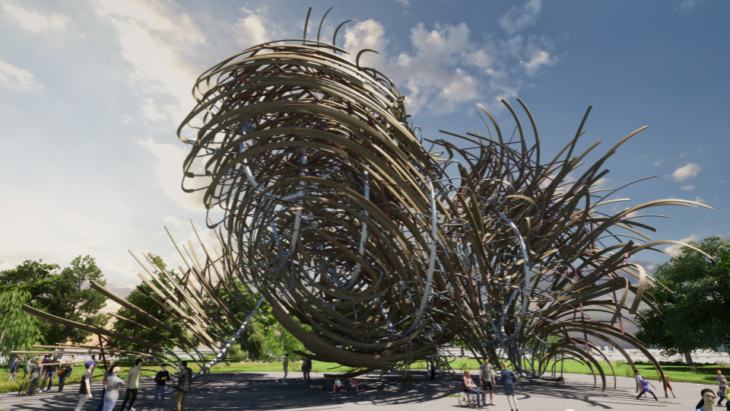
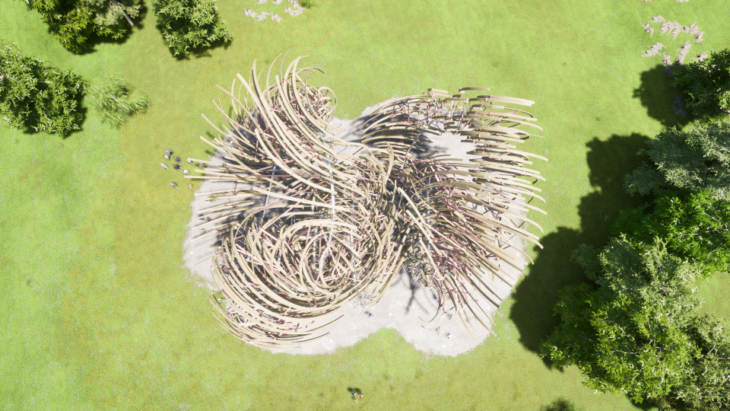
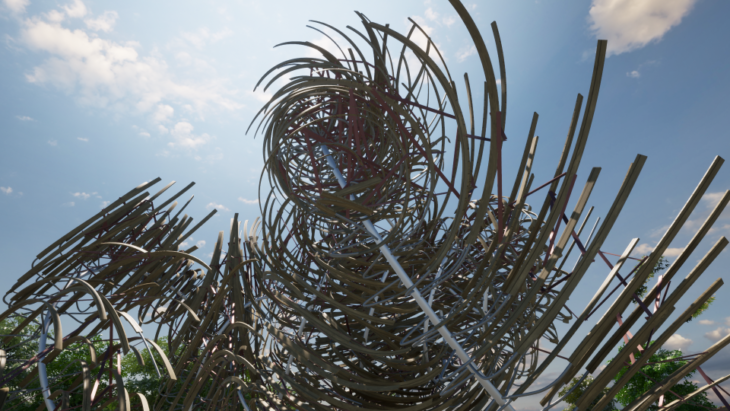
Strange Boids Pavilion is a project of IAAC, Institute of Advanced Architecture of Catalonia developed at Master In Advanced Computation For Architecture & Design in 2021 by students: Sumer Matharu, Salvador Calgua and Faculty: Rodrigo Aguirre, Hesham Shawqy